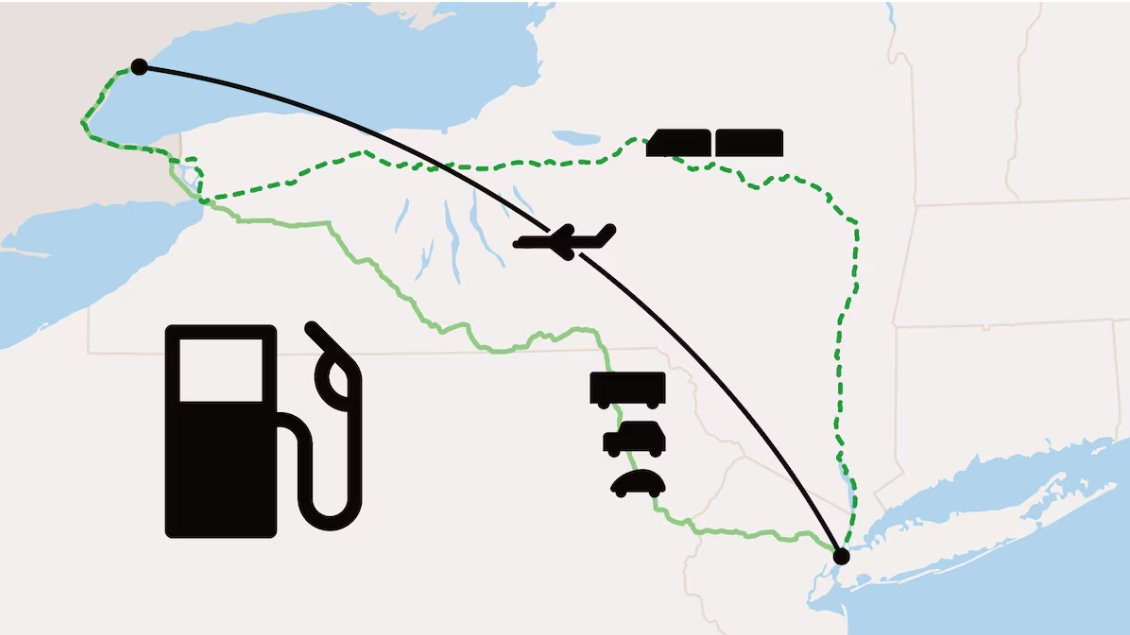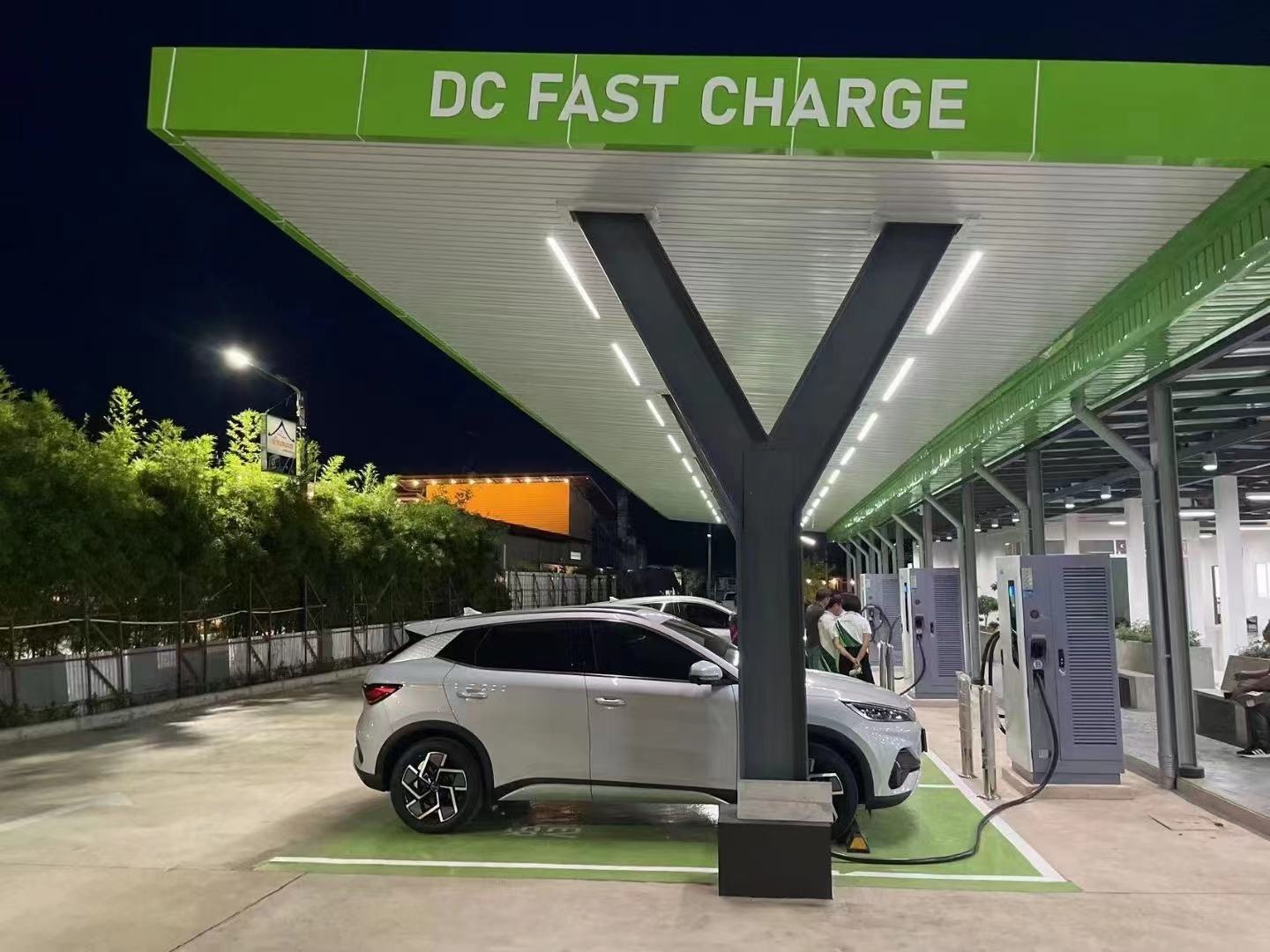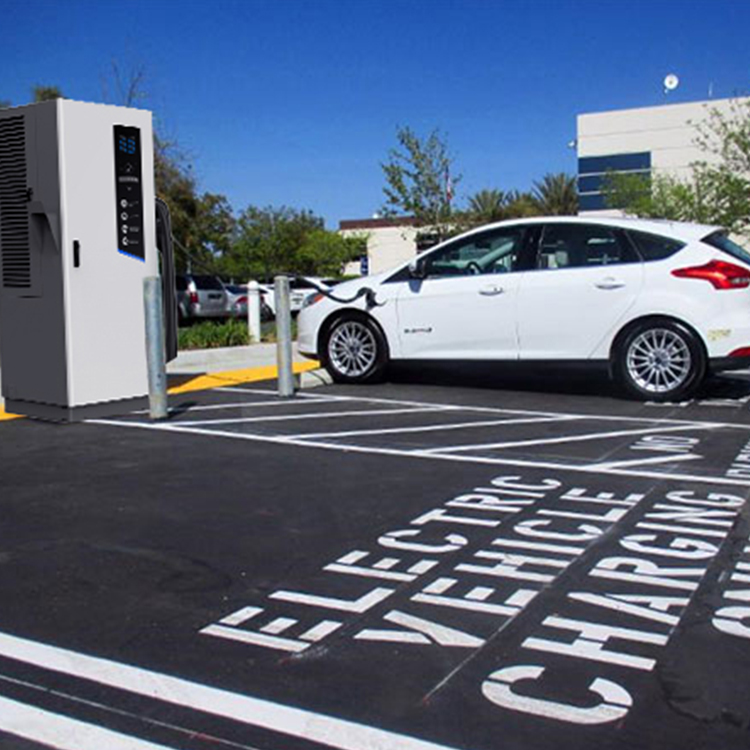
Products
Fast, Reliable, Everywhere

Solutions
Efficient, Innovative EV Charging Solutions.
News
We are committed to the innovation and application of EV charging.
In an era where sustainable travel is gaining momentum, the tourism industry is embracing eco-conscious practices more than ever before. One pivotal aspect of this shift is the increasing demand for electric vehicle (EV) charging infrastructure at tourism sites. From scenic byways to central hubs, the integration of charging stations has become a cornerstone of modern tourism.
This guide serves as a comprehensive resource for understanding, implementing, and optimizing charging stations within tourism destinations. Whether you're a hospitality entrepreneur aiming to enhance guest experiences or a traveler seeking eco-friendly adventures, this guide offers invaluable insights into the electrifying world of tourism site charging stations.
Join us as we explore the significance, advantages, application scenarios, planning strategies, and future evolution of charging infrastructure in tourism. From boosting infrastructure to reducing carbon emissions, each section provides actionable information to propel sustainable tourism forward.
Let's embark on this journey together and discover how charging stations are transforming the tourism landscape, one charge at a time.

Imagine this: You're on a road trip, winding through picturesque landscapes and exploring charming towns. Suddenly, your electric vehicle's battery indicator starts blinking ominously. You realize you're far from any charging station, and panic sets in. This scenario, all too familiar to many electric vehicle owners, highlights the critical need for charging stations at tourism sites.
First and foremost, tourism sites need charging stations to address the pressing concern of range anxiety among electric vehicle owners. Travelers embark on journeys to experience the beauty of nature, immerse themselves in local culture, and create lasting memories. However, the fear of running out of battery power can put a damper on these adventures. By offering charging stations, tourism sites provide a lifeline for EV drivers, alleviating their worries and enabling them to explore with confidence.
Furthermore, the installation of charging stations at tourism sites reflects a commitment to sustainability and environmental stewardship. Today's travelers are increasingly conscious of their carbon footprint and seek destinations that share their values. By embracing electric vehicle infrastructure, tourism sites demonstrate their dedication to reducing greenhouse gas emissions and preserving the natural beauty of their surroundings. This eco-friendly approach resonates deeply with environmentally conscious travelers, attracting them to these destinations.
Moreover, charging stations serve as a strategic asset for tourism sites looking to enhance visitor satisfaction and loyalty. In a competitive travel landscape, every amenity counts. Electric vehicle owners actively seek out destinations that offer charging infrastructure, viewing it as a mark of convenience and forward-thinking hospitality. By meeting this demand, tourism sites can differentiate themselves from competitors and foster positive relationships with travelers.
In addition to addressing customer pain points, charging stations at tourism sites can also unlock new revenue streams and economic opportunities. Electric vehicle owners are a lucrative market segment known for their spending power and affinity for sustainable products and services. By attracting these discerning travelers, tourism sites can stimulate local businesses, drive tourism-related spending, and fuel economic growth in surrounding communities.
In summary, the need for charging stations at tourism sites goes beyond mere convenience—it's about meeting the evolving needs of travelers, demonstrating a commitment to sustainability, and seizing opportunities for growth and prosperity. By embracing electric vehicle infrastructure, tourism sites can position themselves as forward-thinking destinations that cater to the needs of today's discerning travelers.
In today's rapidly evolving travel landscape, tourism sites are faced with the challenge of meeting the needs of a new generation of travelers—those who prioritize sustainability, convenience, and memorable experiences. As a leading producer of cutting-edge DC Charger products, Pilot x Piwin understands the pivotal role that charging stations play in shaping the tourism industry. In this comprehensive guide, we explore the myriad advantages that charging stations offer to tourism destinations, from enhancing visitor satisfaction to promoting environmental conservation and economic prosperity.
Tourism sites are more than just destinations—they're gateways to unforgettable experiences and cherished memories. However, to ensure that visitors have a seamless and enjoyable time, it's essential to invest in robust infrastructure, including charging stations for electric vehicles. These stations serve as vital lifelines for travelers, providing them with the power they need to explore with confidence and peace of mind.
By boosting infrastructure through the installation of charging stations, tourism sites demonstrate their commitment to visitor satisfaction and convenience. Whether travelers are embarking on a scenic road trip or exploring remote wilderness areas, the availability of charging stations ensures that they can recharge their vehicles whenever needed, enabling them to fully immerse themselves in the destination's offerings without worrying about range limitations.
Moreover, investing in charging infrastructure enhances the overall attractiveness and competitiveness of tourism sites. In today's digital age, travelers rely heavily on technology to plan and navigate their journeys. By offering charging stations, tourism sites cater to the needs of tech-savvy travelers who rely on electric vehicles for transportation. This forward-thinking approach not only attracts visitors but also positions tourism destinations as leaders in sustainable travel practices.
In addition to enhancing visitor satisfaction, the presence of charging stations at tourism sites fosters a sense of community and collaboration. Local businesses, government agencies, and utility providers can come together to support the development and maintenance of charging infrastructure, strengthening ties and promoting economic growth in the region.
In conclusion, boosting infrastructure through the installation of charging stations is essential for enhancing tourist satisfaction and ensuring a positive visitor experience. By investing in charging infrastructure, tourism sites can attract eco-conscious travelers, differentiate themselves from competitors, and contribute to the overall prosperity of the destination.

Electric vehicle (EV) owners often face anxiety about finding charging stations, especially when exploring unfamiliar destinations. Installing charging stations at tourism sites directly addresses this concern, offering travelers peace of mind and enhancing travel efficiency. With charging infrastructure readily available, EV owners can plan their journeys confidently, knowing they can recharge conveniently along the way.
By minimizing downtime and disruptions, charging stations contribute to a smoother travel experience, allowing visitors to make the most of their time exploring the attractions and amenities of tourism sites. This improved efficiency benefits both individual travelers and the overall productivity of tourism experiences.
Moreover, the presence of charging stations promotes sustainable transportation options and aligns with the growing demand for eco-friendly travel. As travelers increasingly prioritize reducing their carbon footprint, the availability of charging infrastructure becomes a key factor in destination choice. Tourism sites that offer charging stations demonstrate their commitment to sustainability and attract environmentally conscious travelers.
In summary, installing charging stations at tourism sites resolves EV owners' concerns, enhances travel efficiency, and supports sustainable tourism practices. By providing convenient access to charging infrastructure, tourism sites cater to the needs of modern travelers and contribute to a more enjoyable and sustainable travel experience.
One of the most compelling advantages of installing charging stations at tourism sites is the significant contribution to reducing carbon emissions, thereby promoting green tourism practices. As the tourism industry increasingly focuses on sustainability and environmental conservation, the integration of electric vehicle (EV) infrastructure plays a crucial role in achieving these goals.
By encouraging the adoption of electric vehicles, charging stations help to mitigate the environmental impact of transportation in tourism destinations. EVs produce fewer greenhouse gas emissions compared to traditional gasoline-powered vehicles, leading to cleaner air and a healthier environment for both residents and visitors alike. This reduction in carbon emissions aligns with the principles of green tourism, which seeks to minimize the ecological footprint of travel activities.
Moreover, the presence of charging stations at tourism sites sends a powerful message about the destination's commitment to sustainability. Travelers are increasingly seeking experiences that align with their values, including eco-friendly transportation options. By offering charging infrastructure, tourism sites demonstrate their dedication to environmental stewardship and attract visitors who prioritize sustainable travel practices.
Furthermore, reducing carbon emissions through the adoption of electric vehicles has broader benefits for the tourism industry and local communities. Cleaner air and reduced pollution contribute to a more pleasant and enjoyable visitor experience, enhancing the overall appeal of tourism destinations. Additionally, the transition to electric vehicles supports the growth of green industries and creates job opportunities in renewable energy sectors.
In conclusion, the integration of charging stations at tourism sites plays a vital role in reducing carbon emissions and promoting green tourism practices. By supporting the adoption of electric vehicles, tourism destinations can minimize their environmental impact, attract environmentally conscious travelers, and contribute to a more sustainable future for the tourism industry.
As the tourism industry embraces sustainability and innovation, the integration of charging stations for electric vehicles (EVs) has become increasingly prevalent at tourism sites worldwide. These charging stations not only cater to the needs of eco-conscious travelers but also offer a range of benefits to tourism destinations. In this section, we explore the various application scenarios of charging stations at tourism sites, from lodging facilities to scenic byways and central tourism hubs.
Tourism lodging facilities, including hotels, resorts, and campgrounds, play a crucial role in accommodating travelers seeking overnight stays. By integrating charging facilities for electric vehicles, these lodging establishments can enhance the attractiveness of their amenities and cater to the growing demand for sustainable travel options.
Charging stations at tourism lodging facilities offer convenience and peace of mind to EV owners, ensuring that they can recharge their vehicles overnight or during their stay. This amenity not only attracts environmentally conscious travelers but also encourages longer stays and repeat visits.
Moreover, tourism lodging charging facilities contribute to the overall sustainability of the destination by reducing the carbon footprint of transportation activities. By encouraging the use of electric vehicles, lodging establishments demonstrate their commitment to environmental stewardship and support the transition to cleaner transportation options.
In addition to providing charging infrastructure, tourism lodging facilities can leverage EV charging as a unique selling point to attract guests and differentiate themselves from competitors. By offering this essential amenity, lodging establishments can enhance guest satisfaction and loyalty, ultimately driving business growth and success.
In summary, tourism lodging charging facilities play a vital role in supporting sustainable travel practices and enhancing the overall visitor experience. By integrating charging stations for electric vehicles, lodging establishments can attract eco-conscious travelers, reduce carbon emissions, and position themselves as leaders in green tourism.
Scenic byways offer travelers the opportunity to explore picturesque routes that highlight natural beauty, historical landmarks, and cultural attractions. These routes are often remote and may span long distances, making access to reliable EV charging infrastructure essential for a seamless travel experience.
Installing charging points along scenic byways provides numerous benefits. Firstly, it alleviates range anxiety for electric vehicle owners, ensuring they can enjoy the journey without worrying about running out of battery. Travelers can recharge their vehicles at strategically placed charging stations while taking in the scenic views or visiting nearby attractions.
Additionally, charging points along scenic byways promote sustainable tourism by encouraging the use of electric vehicles. As more travelers opt for eco-friendly transportation, the presence of charging infrastructure becomes a significant factor in their travel planning. By providing charging facilities, regions can attract a growing segment of environmentally conscious tourists who prioritize reducing their carbon footprint.
Moreover, scenic byway charging points can stimulate local economies. Travelers who stop to charge their vehicles are likely to spend time and money at nearby businesses, such as cafes, restaurants, and shops. This influx of visitors can boost revenue for local enterprises and create economic opportunities for communities along the route.
To maximize the benefits, it's crucial to ensure that charging stations are easily accessible, well-marked, and located at convenient intervals. Providing amenities such as rest areas, picnic spots, and informational kiosks can enhance the charging experience and make the journey more enjoyable for travelers.
In conclusion, installing charging points along scenic byways is a strategic move to support sustainable tourism, alleviate range anxiety, and boost local economies. By embracing this approach, regions can enhance the travel experience for electric vehicle owners while promoting environmental stewardship and economic growth.

Central tourism hubs are bustling areas that serve as the focal points for visitors, often featuring a concentration of attractions, dining, shopping, and entertainment options. These hubs are ideal locations for installing charging stations for electric vehicles (EVs) due to the high volume of foot traffic and vehicle turnover.
Charging stations at central tourism hubs provide a range of benefits. For EV owners, these stations offer a convenient place to recharge their vehicles while they explore the nearby attractions or run errands. This convenience enhances the overall travel experience, making it easier for visitors to manage their time and travel needs efficiently.
The presence of charging stations in central hubs also encourages the adoption of electric vehicles among tourists. As more travelers experience the convenience and availability of EV charging infrastructure, they are more likely to consider electric vehicles for their own transportation needs. This shift not only promotes sustainable tourism but also helps reduce the carbon footprint of travel activities.
Moreover, central tourism hub charging stations can support local businesses. Visitors who stop to charge their vehicles are likely to spend time and money at nearby establishments, boosting the local economy. Restaurants, cafes, shops, and entertainment venues can all benefit from the increased foot traffic and prolonged visits resulting from the need to charge EVs.
To maximize the effectiveness of charging stations in central tourism hubs, it is important to ensure they are easily accessible and well-integrated into the overall infrastructure. Clear signage, user-friendly interfaces, and reliable service are key components that enhance the user experience and encourage repeat use.
In conclusion, installing charging stations at central tourism hubs provides numerous advantages, including convenience for EV owners, promotion of sustainable tourism, and support for local economies. By strategically placing charging infrastructure in these busy areas, tourism destinations can enhance visitor satisfaction, promote environmental responsibility, and stimulate economic growth.
Effective planning and management of charging stations are crucial to meet the growing demand for electric vehicle (EV) infrastructure at tourism sites. Proper implementation ensures that the charging stations are not only convenient and accessible for users but also operationally efficient and sustainable in the long run. This section delves into the key steps required to achieve successful deployment and management of charging stations, starting with conducting thorough demand analysis.
Conducting a thorough demand analysis is the foundational step in planning and managing charging stations. This process involves evaluating various factors to understand the current and future needs for EV charging infrastructure at a specific tourism site.
By conducting a thorough demand analysis, tourism sites can ensure that the charging infrastructure they implement will be sufficient to meet current needs and scalable to accommodate future growth. This proactive approach not only enhances the visitor experience but also supports the broader goal of promoting sustainable tourism through the adoption of electric vehicles.

Selecting the right locations for charging stations is a critical aspect of effectively planning and managing DC charger installations at tourism sites. Strategic site selection ensures that charging stations are positioned in optimal locations to maximize accessibility, convenience, and usage. In this section, we explore the key considerations for selecting sites for charging stations.
By strategically selecting sites for charging stations, tourism sites can maximize the effectiveness and utilization of their DC charger installations. This proactive approach not only enhances the visitor experience but also supports the broader goal of promoting sustainable transportation options in the tourism industry.
Selecting the right equipment and configuring it effectively are essential steps in the planning and management of charging stations at tourism sites. Optimal equipment selection and configuration ensure that charging stations meet the needs of users, operate efficiently, and integrate seamlessly with existing infrastructure. In this section, we explore the key considerations for optimizing equipment selection and configuration.
By optimizing equipment selection and configuration, tourism sites can ensure that their charging stations are efficient, user-friendly, and future-proof, supporting the growing demand for electric vehicle infrastructure and enhancing the overall visitor experience.
To maintain the reliability and efficiency of charging stations at tourism sites, it's essential to implement robust operation and maintenance practices. Here’s a comprehensive approach to ensure smooth functioning:
By implementing these practices, you can ensure that the charging stations at your tourism site are reliable, efficient, and user-friendly. This not only enhances the visitor experience but also supports the broader goal of promoting sustainable tourism.
The integration of charging stations into tourism infrastructure is not just a trend; it's a pivotal shift towards sustainable and efficient travel. As the demand for electric vehicles (EVs) continues to rise, so does the need for a robust and accessible charging network. This evolution will play a crucial role in shaping the future of tourism, ensuring that destinations are equipped to handle the growing number of EVs while promoting green travel initiatives. In this section, we will explore the key developments in charging station networks and how they will enhance tourism experiences.
The expansion of charging station networks is essential to support the increasing number of electric vehicles on the road. Here's how this expansion is set to transform tourism:
| Aspect | Current Data | Projected Data (2030) | Source |
| Number of Global EVs | 10 million | 145 million | International Energy Agency |
| EV Charging Stations (Global) | 1.3 million | 12.7 million | International Energy Agency |
| High-Speed DC Chargers Installed | 150,000 | 1.5 million | BloombergNEF |
| Integration with Renewable Energy | 30% | 60% | Renewable Energy Association |
| EV Tourism Growth Rate | 25% annually | 30% annually | Global EV Outlook |
By focusing on these key areas and supported by the data, the expansion and enhancement of charging networks will play a vital role in supporting sustainable tourism. As the infrastructure evolves, it will cater to the needs of modern travelers, promote eco-friendly practices, and help destinations adapt to the growing popularity of electric vehicles.

The future of tourism is increasingly intertwined with the principles of sustainability and environmental stewardship. The integration of electric vehicle (EV) charging stations at tourism sites is a vital component in this transformation, fostering a fusion of environmental protection and green tourism.
One of the most significant impacts of installing EV charging stations is the reduction of the tourism sector's carbon footprint. Electric vehicles, which produce zero tailpipe emissions, contribute to lower greenhouse gas emissions, leading to improved air quality in popular tourist areas. By making EV charging accessible, tourism destinations encourage more visitors to opt for electric vehicles, supporting global efforts to combat climate change.
Moreover, the presence of charging stations at tourism sites promotes sustainable travel habits. When tourists see that a destination is equipped with green transportation infrastructure, they are more likely to choose eco-friendly travel options. This shift not only enhances the destination’s image as an environmentally conscious site but also aligns with the growing preference among travelers for sustainable travel experiences.
The integration of renewable energy with EV charging infrastructure further amplifies the environmental benefits. Many modern charging stations are designed to harness renewable energy sources such as solar or wind power, reducing dependence on fossil fuels and minimizing the environmental impact of tourism activities. This practice underscores the destination’s commitment to sustainability and sets an example for visitors to consider renewable energy in their own lives.
Charging stations can also play an educational role, increasing awareness about the advantages of electric vehicles and the importance of renewable energy. Informative signage and interactive displays at charging sites can educate tourists about the environmental impact of their choices, fostering a deeper understanding and commitment to sustainable practices.
The benefits of this green transformation extend to local biodiversity and conservation efforts. By reducing pollution and supporting sustainable practices, tourism sites can protect local wildlife and natural habitats. Cleaner air and reduced noise pollution create a healthier environment for both humans and animals, bolstering biodiversity and conservation initiatives.
From an economic perspective, embracing green tourism can drive growth and job creation in the green sector. Destinations that prioritize sustainability can attract a niche market of eco-conscious travelers, who often prefer and are willing to pay a premium for sustainable services and products. This not only boosts the local economy but also supports broader environmental and social goals.
| Aspect | Current Data | Projected Data (2030) | Source |
| Global EV Sales | 3 million | 25 million | International Energy Agency |
| Renewable Energy Integration | 30% of EV stations | 60% of EV stations | Renewable Energy Association |
| Increase in Eco-Tourism | 15% annually | 20% annually | Global Sustainable Tourism Council |
| Reduction in CO2 Emissions by EVs | 50 million tons annually | 500 million tons annually | Environmental Protection Agency |
By focusing on the fusion of environmental protection and green tourism, destinations can not only reduce their ecological footprint but also enhance their appeal to a growing demographic of environmentally conscious travelers. This approach ensures that tourism development aligns with global sustainability goals, fostering a greener and more responsible travel industry.
As the world transitions to a more sustainable future, the integration of electric vehicle (EV) charging stations at tourism sites becomes a critical component of this journey. By addressing the needs of modern travelers and aligning with global environmental goals, these charging solutions offer multiple benefits: enhancing tourist satisfaction, reducing carbon emissions, and promoting green tourism. Strategic planning, effective management, and the adoption of cutting-edge technology are essential to maximize the impact of charging infrastructure. As we move forward, the continued expansion and enhancement of EV charging networks will play a pivotal role in transforming the tourism industry into a beacon of sustainability. By embracing these changes, tourism destinations can not only improve their environmental footprint but also attract and retain eco-conscious visitors, ensuring a prosperous and sustainable future for all.
